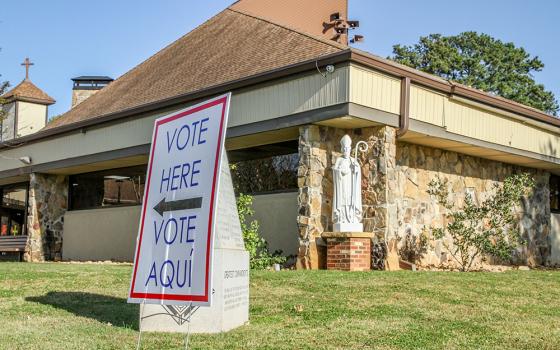Last week, I began a look at one of the Catholic church's greatest assets, namely, the extraordinary contributions over so many years of religious women to the church's missionary, ministerial, and spiritual life.
Sr. Sandra Schneiders' excellent article on ministerial religious life in the Oct. 2 issue of the National Catholic Reporter situates that contribution in its proper biblical and historical contexts.
As she points out, it was not until 1900 that noncloistered apostolic congregations of women were formally recognized as an authentic form of religious life. Pope Leo XIII did this.
However, Schneiders is emphatic in her insistence that this papal decision did not create a new form of religious life.
"It was," she writes, "the public recognition of a fait accompli, namely, that over the course of nearly 400 years a new form of women's religious life had emerged and its validity, already long recognized by the people of God and by civil governments...[only] required acknowledgment by the institutional church."
However, for 50 years thereafter women religious actually lived a kind of hybrid life; that is, they maintained "virtually the whole of monastic life at home and a full-time ministerial life in their apostolates."
Some Catholics were at least vaguely familiar with that hybrid life; most were completely unaware of it.
The typical nonstop 17-hour-day (from 5 a.m. until 10 at night) in the pre-Vatican II convent required the nuns, "dressed at all times in the restrictive fluting and pleats, floor-length gowns, starched wimples and veiled headdresses of 17th- or 18th-century peasants or nobles," to struggle to fit in daily Mass (sometimes followed by Benediction), meditation, devotional exercises (such as the Rosary and Stations of the Cross), some form of the Divine Office, spiritual reading from assigned books, daily manual work assignments inside the convent, three meals in common, often in silence, and an hour of "recreation," which usually included handwork or mending, schoolwork, or parish and community tasks.
On the same day, the nuns prepared classes and carried a full day's professional schedule in school, hospital, or other Catholic institutions.
"In short," Sandra Schneiders points out, "they carried all the burdens of monastic life with none of the leisure for personal prayer, lectio divina [meditative reading of Sacred Scripture], genuine community life, or ordinary recreation of monastics, and all the burdens of the apostolate without the professional preparation or privileges enjoyed by the clergy."
She puts that double-life in a formula: "'monastics at home' and 'apostles abroad'."
It was Pope Pius XII who launched the process of renewal that would be taken up by the Second Vatican Council more than a decade later.
As Catholic educational institutions staffed by sisters multiplied rapidly in the 1950s, the Pope urged religious superiors to begin the modernization of their congregations, including the abolition of outmoded customs, the modification of habits, and increased attention to the professional education of the sisters.
At the subsequent ecumenical council Cardinal Leo-Jozef Suenens of Belgium vigorously promoted the renewal of women's religious life. Vatican II itself urged these communities to return to their biblical roots and their founding charisms, and to develop a greater measure of engagement with the modern world.
Women religious responded with energy and enthusiasm. In a period of "barely 40 years they fairly well bridged the historical gap between their early modern European origins and postmod-ern American ecclesial and cultural reality."
Some Catholics were taken aback by what they interpreted as the speed of the renewal, but in actuality the development of non-monastic ministerial religious life for women had been underway for nearly four centuries.
The council mandated a renewal chapter (or assembly) for virtually all congregations, at which their constitutions were revised and subsequently approved by the Vatican.
Where the old constitutions had placed primary emphasis on the monastic side of religious life and only secondary emphasis on the ministerial, the revised constitutions defined religious life as having "a single, integrated end."
The most immediately visible, though hardly the most important, change was in the habit. After a period of experimentation, most renewed congregations successfully made the transition to simple contemporary dress appropriate to the now quite varied situations in their ministerial lives.
"If the habit was the emotional flash point of renewal," Schneiders writes, "the broadening and full commitment to ministry" was the "spiritual substance at the heart of renewal."
We should not trust the judgment of anyone for whom the habit issue is more important than the issue of ministry.
© 2009 Richard P. McBrien. All rights reserved. Fr. McBrien is the Crowley-O'Brien Professor of Theology at the University of Notre Dame.



